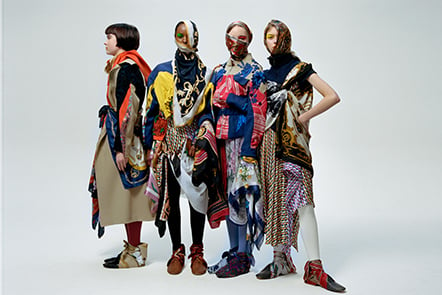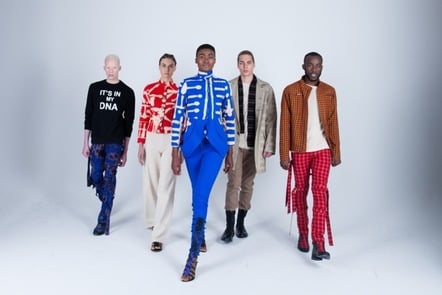Pop culture, in especially, plays a crucial effect in defining fashion trends over the years. As we explore through the history of pop culture, we can observe how fashion trends have developed, adapted, and ultimately circled back to their beginnings.
You take a look and study the evolution of pop culture fashion trends throughout the past to the around, highlighting the essential moments and forces that have molded our sense of style. In this post, You can understanding fashion from business to culture.
Understanding Fashion from Business to Culture
It 1960s marked a watershed point in pop culture fashion. This era's free-spiritedness and defiance against established standards had a tremendous impact on apparel.
Miniskirts, vivid patterns, and bright colors became icons of the young movement. Famous figures like Twiggy and The Beatles championed this daring style, promoting individualism and a departure from the homogeneity of prior decades.

The Disco Fever of the 1970s
Your 1970s were all about sparkle and glamour. Dancing music and the rise of nightlife gave birth to a trend that was all about shine and glitter. Bell-bottom pants, springboard shoes, and wide-collared blouses became mainstays of the disco culture.
Robert Travolta's white outfit in "Saturday Night Fever" is an archetypal image of this era. The 1970s also witnessed an appreciation of androgynous design, with musicians like David Bowie challenging the boundaries of gendered clothes.
The 1980s: A Decade of Excess
The 1980s were marked by excess in every aspect, and fashion was no exception. Oversized pads, vivid hues, and bold designs ruled the fashion world. Madonna, with her piled jewellery, lacy gloves, and tiny skirts, became an emblem of this era. Hip-hop culture appeared, bringing with it large hoodies, shoes, and the development of streetwear.
The '90s Grunge Revival
The '90s saw a dramatic contrast to the exuberance of the '80s. Grunge fashion, primarily influenced by the independent rock scene, was distinguished by flannel shirts, tattered jeans, and fighting boots. Kurt Cobain, the singer of Nirvana, becoming the poster child for his laid-back, dishevelled appearance. At the same period, the "preppy" style with plaid shorts and polo shirts gained popularity.
The Turn of the Millennium: Y2K Fashion
When we entered the new century, the fashion world was distinguished by a blend of futuristic designs and a nostalgic reference to the past. The "Y2K" style featured dazzling metallic textiles, low-rise jeans, plus logo-heavy clothes. Musicians like Britney Aguilera and Paris Hilton exemplified this age. Baguette bags, halter tops, and insect clips were must-have accessories.
Contemporary Pop Culture Fashion
Nowadays, pop culture fashion trends seem to grow swiftly. Social media has revolutionized the way we find and adopt new fashions. Influencers, celebrities, and online groups have a crucial influence in determining what's considered fashionable. Gender fluidity is widely embraced, and conservation is at the forefront of fashion discourse.

In previous years, streetwear has been a prominent force in the fashion world, with companies like Ultimate and Off-White achieving global notoriety. Athleisure, a mix of athletic and leisurewear, has also made a huge impact on how we dress, particularly in a world where convenience is highly valued.
Related Post: Where Fig Leaves First Came Into Fashion?
The growth of pop culture fashion patterns in the 21st century is distinguished by a mix of nostalgia, creativity, and a greater focus on individual expression. Environmental and ethical fashion are increasing traction, reflecting a greater awareness of environmental and social challenges.
Pop culture fashion trends has always been in flux, affected by the prevailing social, societal, and technological factors of the day. The progression of style from the Swinging Sixties to the Y2K period to the modern fashion environment is a tribute to our ever-changing planet. Need to know professional what's 10 facts about Italian fashion culture 2025.
What is constant, however, is the potential of fashion to reflect our ideals, express our personal identities and connect us to the greater cultural conversation. When we move into the future, it will be intriguing to witness how pop culture continuing to change the way we dress and how our growing fashion choices, in turn, affect the culture at large.
Fashion as a Cultural Expression
A Reflection of Society
Cultural developments as well as political periods become obvious through fashion development. Throughout the years fashion has evolved to reflect changing cultural movements by using power suits of the 1980s as symbolization of empowerment and vintage reinventions as a display of nostalgic interests.
Identity and Self-Expression
People use clothing as a strong means to articulate their personal identity. The way people dress serves as a communicative tool which displays both their self-identity along with their cultural and values and membership groups.
Fashion in Pop Culture
Three sectors including entertainment industry and music and social media platforms shape emerging fashion trends. Fashion and style directions emerge from celebrity trends and fashion brand decisions while they spread throughout popular recognition.
The Future of Fashion
The fashion sector permanently advances through the combination of established customs with new creative developments. Clothing will continue at the vanguard of global multicultural trends and commercial evolution because sustainable practices and online experiences and intercultural inclusion establish their place of significance.
The foundation of style goes deeper than superficial looks since it mixes corporate management with cultural beginnings and scientific advancement. Fashion continues advancing its societal effects which has converted the industry into an interesting examining field.
